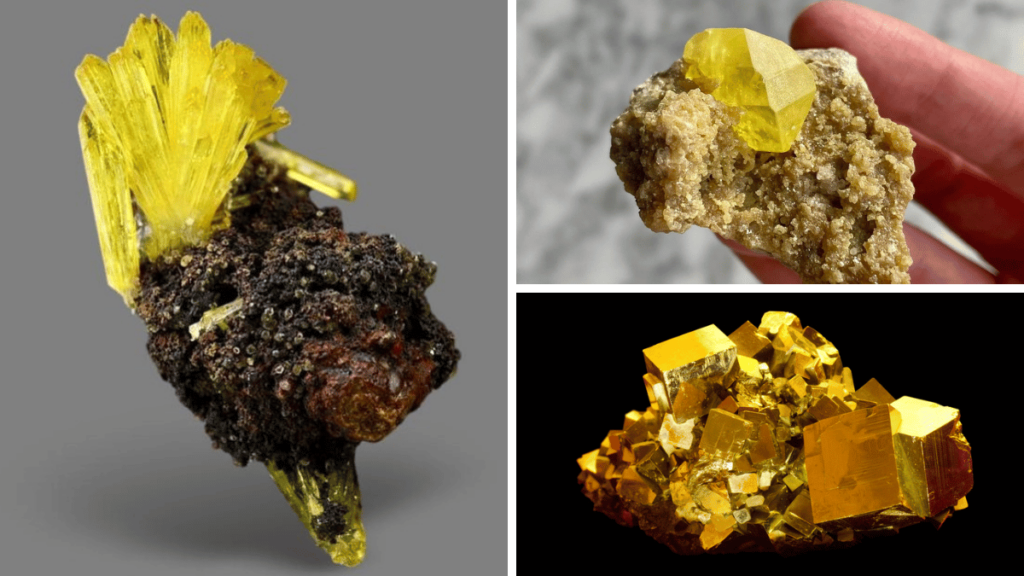
Yellow is the color of sunlight and flowers. A desirable hue that’s rare in nature, outside of the occasional plant, allowing stones that bear the color to truly stand out. Minerals in this color range from gemstones to the familiar ground crystals of sulfur. The color yellow is sometimes associated with danger, and it holds true here as you’ll see in a few moments.
So, let’s dig in and I’ll show you some different types of yellow rocks and minerals to fuel that need for sun-colored stones!
Yellow Rocks and Minerals
1. Sulfur
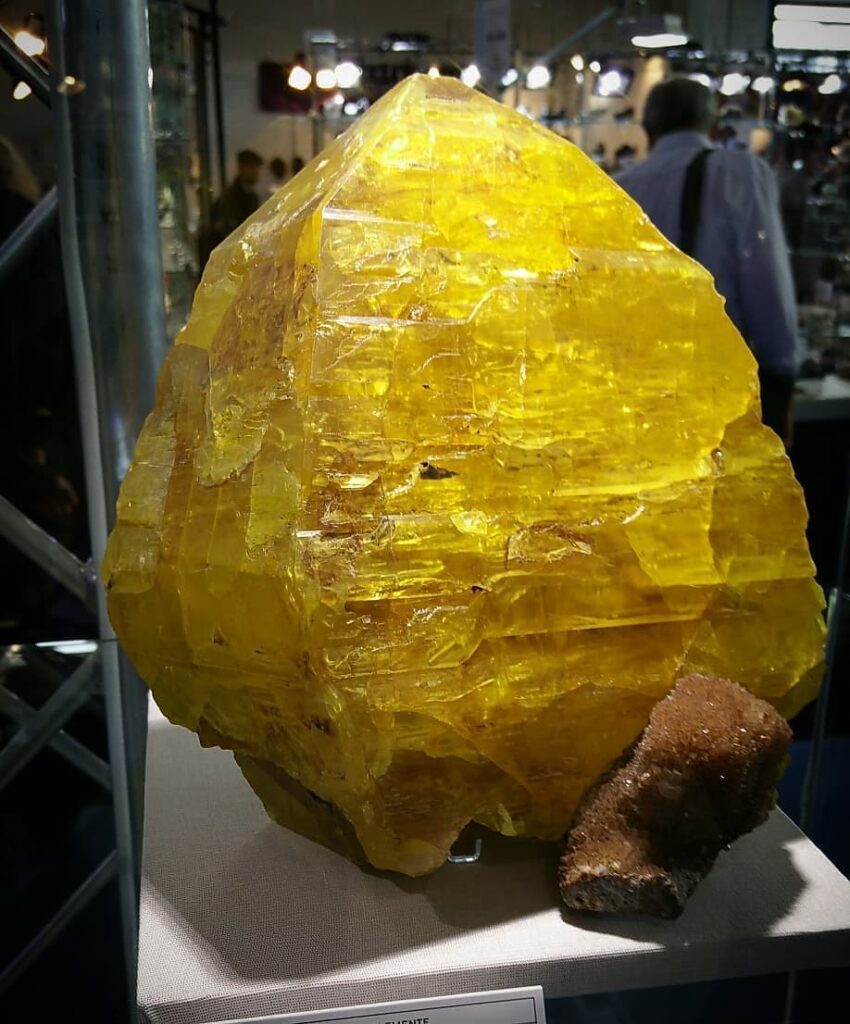
Sulfur is a yellow, elemental mineral. While most people think of the yellow powder used for chemical reactions, it actually forms beautiful yellow crystals in nature. It’s one of the most abundant elements in the Earth’s crust and it’s a part of countless things in our daily lives.
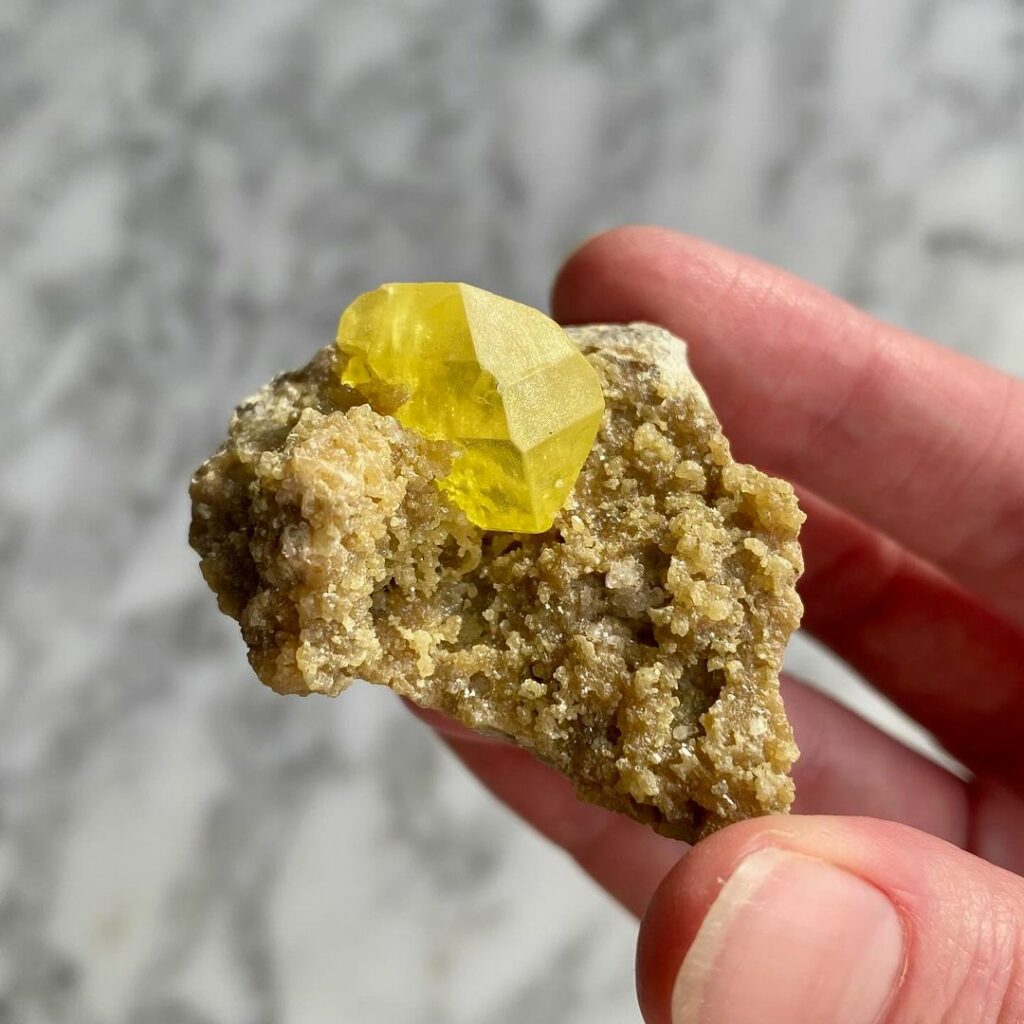
While sulfur can be found as crystals, it’s far more likely to be in other forms. Sulfides and sulfates are common across nature, sulfur is an important part of our natural environment and has countless uses in industry. It’s still mined, but the majority of sulfur used for industrial use is pulled from petroleum products.
Sulfur only has its tell-tale smell of “brimstone” when it’s burning, there’s no particular smell when elemental sulfur is held in a solid form. Specimens are readily available and cheap for those who want them, and the best can make a stunning display on the mineral shelf.
2. Citrine
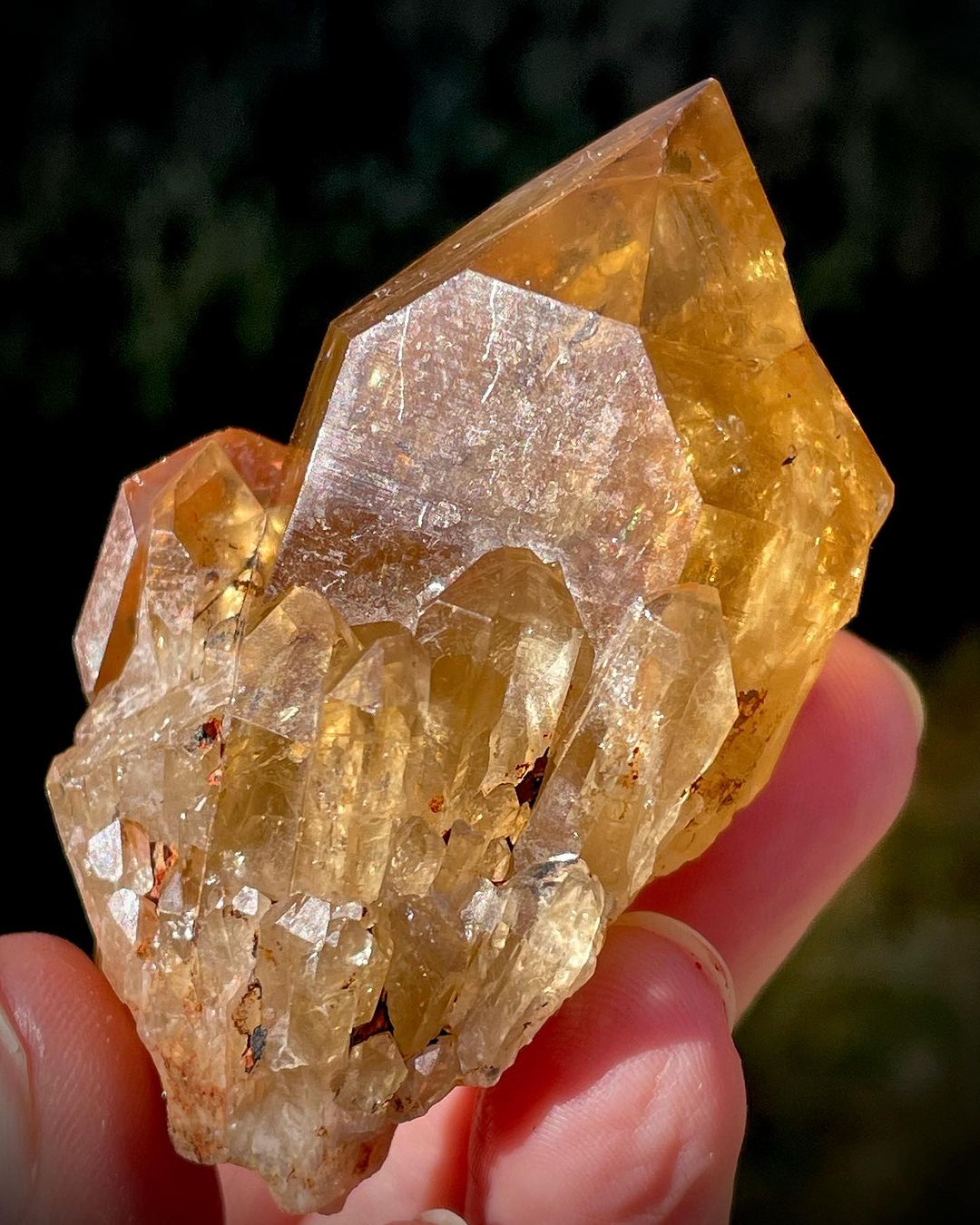
Citrine is the yellow form of quartz. Its coloration comes from the inclusion of iron ions in the color center of the crystals. Citrine and amethyst are formed from the same stock, but citrine requires higher temperatures during its formation to gain the yellow-gold coloration it’s known for. It’s rarer in nature for that reason.
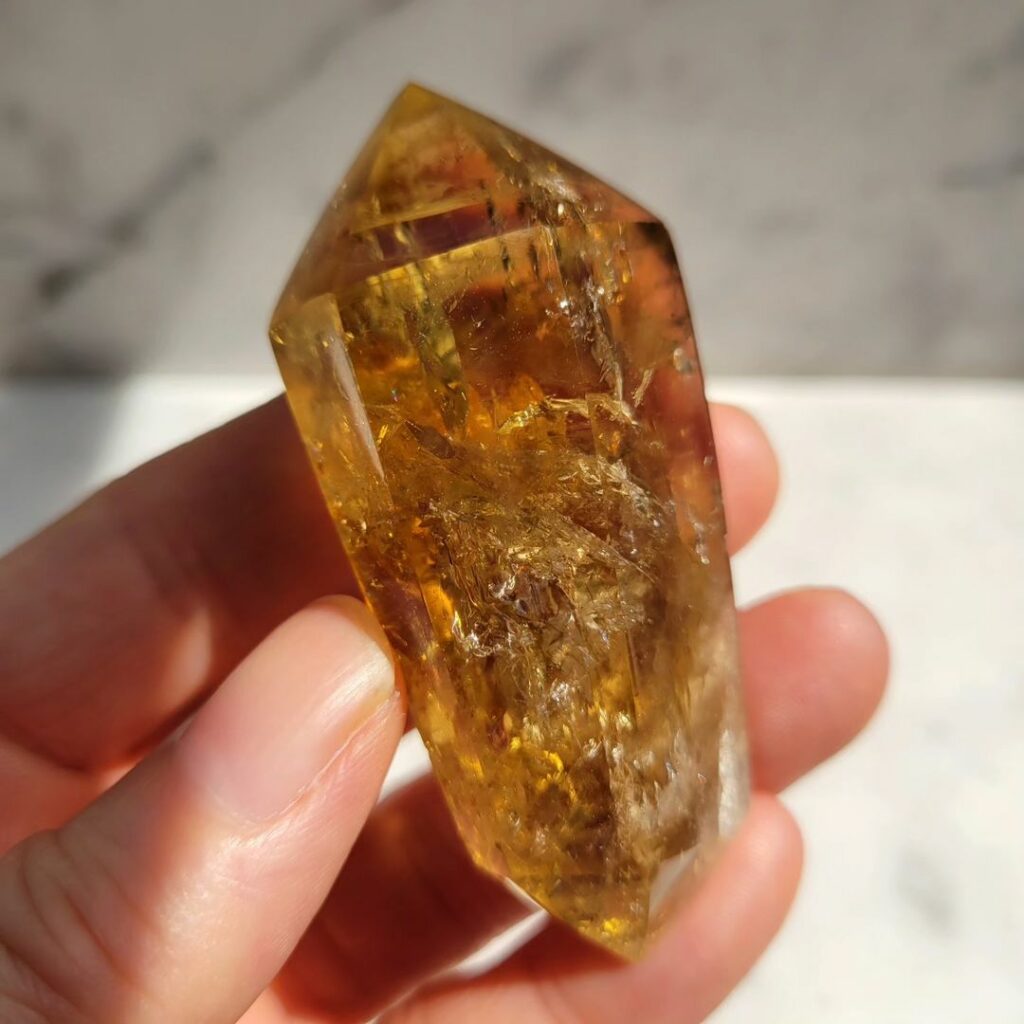
Citrine is a favored gemstone by many, but there’s some controversy. Namely, the vast majority of citrine sold is heat-treated amethyst. While frustrating for purists, its an industry-accepted practice and doesn’t require disclosure. The HTA origin of most faceted stones should be assumed unless told otherwise, including those that have the “natural” label. Crystal points will often show tell-tale spots where the color looks burnt due to a lack of control in heating during the process.
Citrine varies from a deep-golden yellow to the orange of Madeira citrine. It’s a favorite stone for many, despite its relative rarity. Citrine is one of the most famous yellow gemstones, but it’s certainly not the only one available to those who want the color in their jewelry.
3. Heliodor
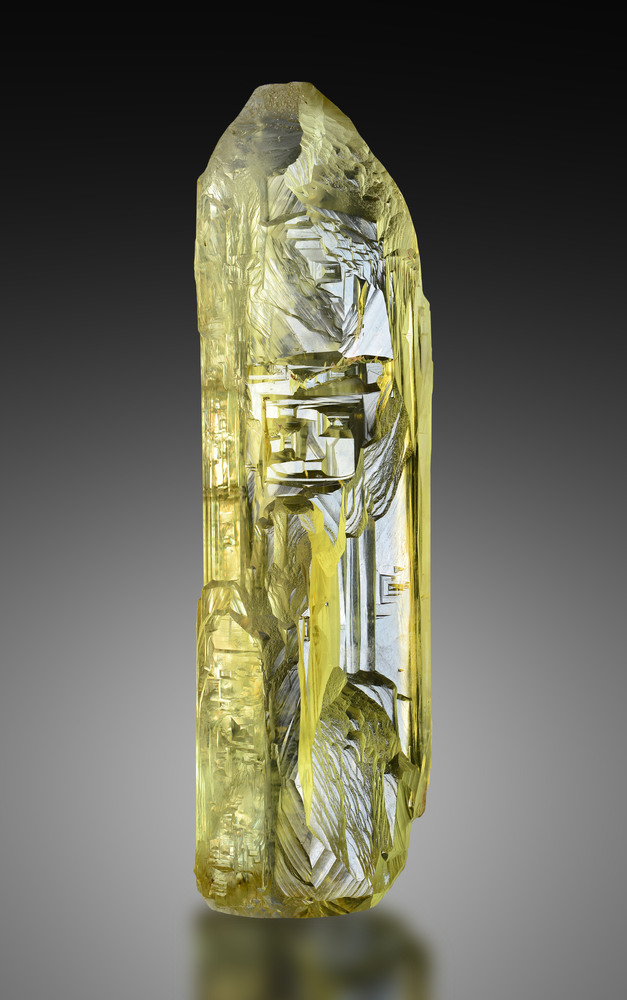
Heliodor is the yellow variant of beryl, which is the family that makes up emeralds. It often occurs in large crystals, which makes it one of the few precious stones that don’t shoot up drastically in pricing for bigger gems. It’s sometimes called Yellow Emerald, which is descriptive but isn’t a legal trade term.
It’s a hard gemstone, running from 7.5 to 8.0 on Moh’s scale. This makes it suitable for every type of jewelry, including rings and bracelets. Heliodor’s price is dependent on clarity first and color afterward, which is common among the beryl varieties. It’s an affordable stone for the most part, it occurs in large masses that make gems of most common sizes readily available.
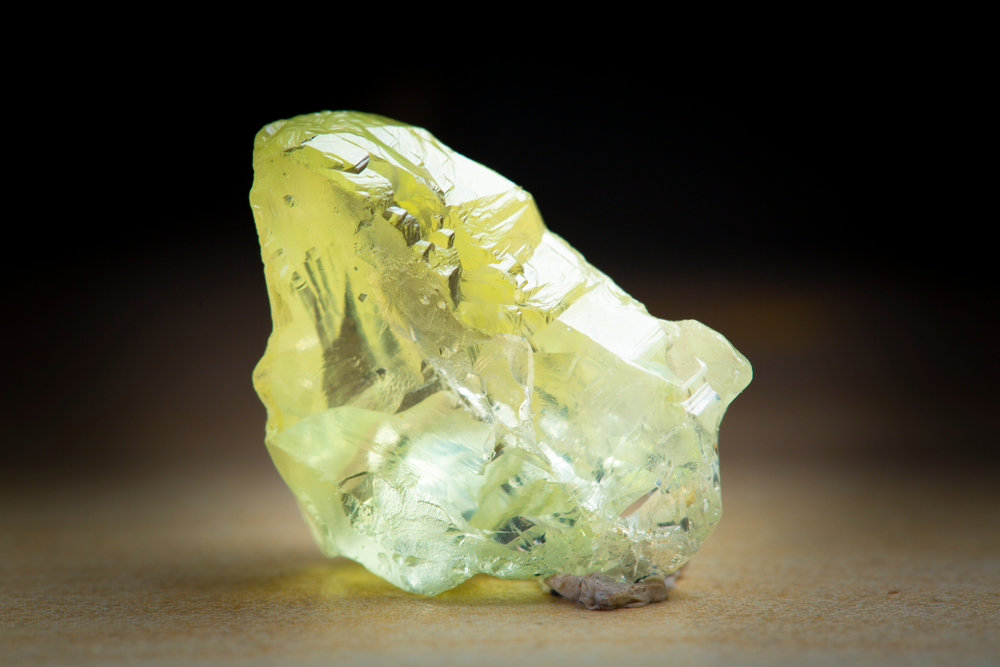
Heliodor is often associated with the sun, and at its best it’s easy to see why. The gems range from a pale yellow to a bright golden color. Some gemologists consider the lighter and golden varieties separate varieties. Whether or not you do, one thing is certain: yellow beryl is a beautiful, durable stone.
4. Orpiment
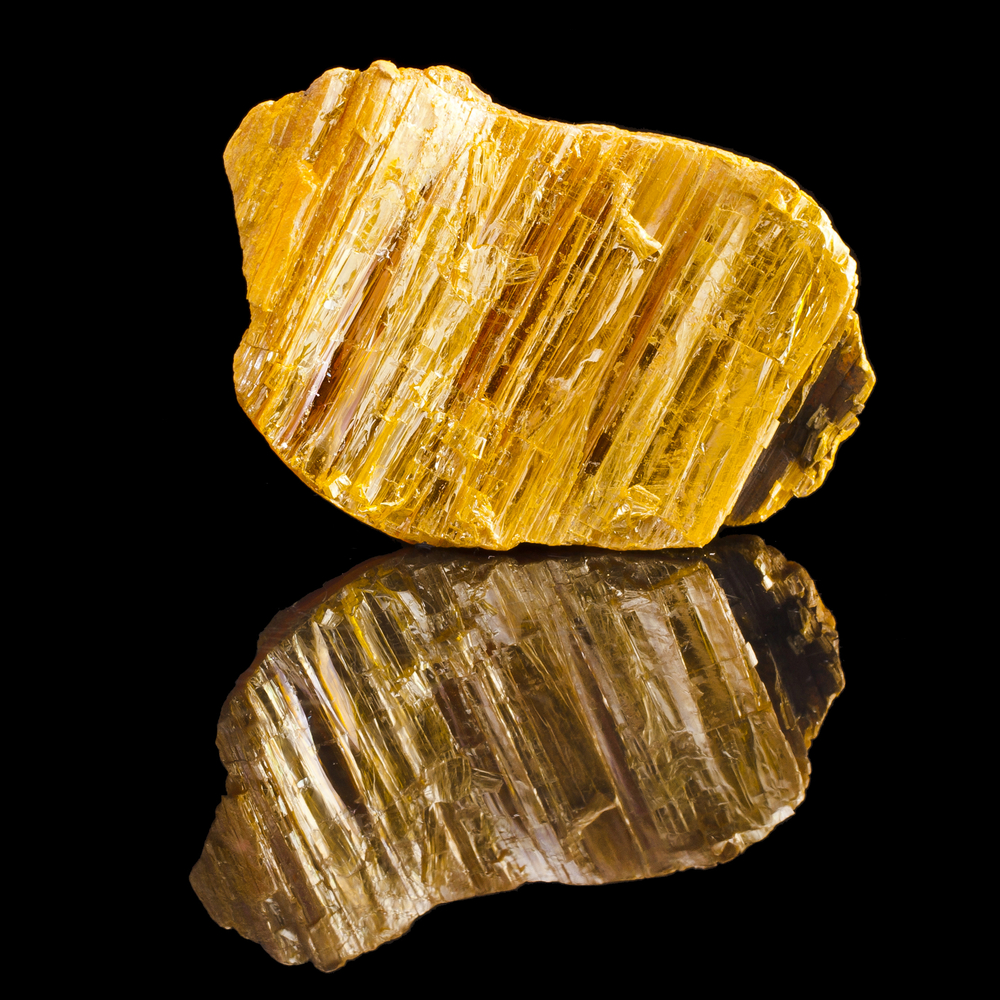
Orpiment is a fascinating mineral. It’s an ore of arsenic and has a long history of both medical and pest control use. The fact that it can form into brilliant yellow-orange crystals is a bonus for mineral collectors, but the majority of specimens simply look like yellow rocks.
Orpiment is toxic on its own, so care has to be taken when handling specimens. It doesn’t help that the crystals are ridiculously soft, 1.5-2.0 on Moh’s scale. It was one of the few yellow pigments available to early artists, but it was rapidly replaced due to its toxicity when other yellow options became available.
Orpiment is present in some other stones. The most notable stone that contains veins of orpiment is the carbonate mineral that’s acquired the misnomer of Bumblebee Jasper, but it shows up in other places. With a bit of care and a good case, however, orpiment makes for an incredible and deadly display of minerals.
5. Iron Pyrite
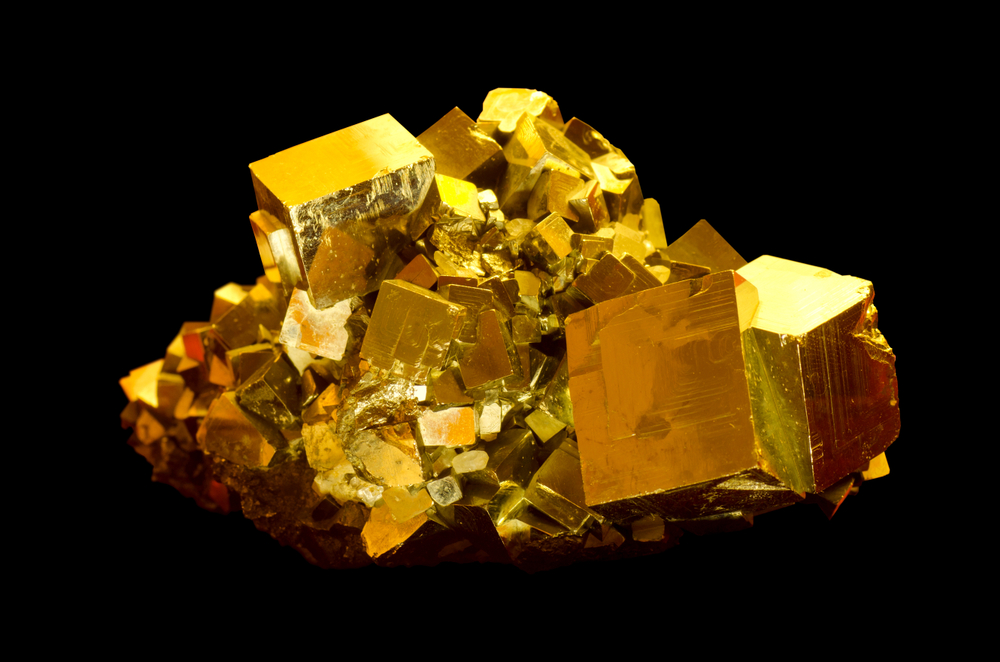
Iron pyrite is often called Fool’s Gold, due to its coloration and the fact that it’s commonly found alongside natural forms of gold. Pyrite is distinguishable by its unique crystals. Pyrite forms into cubic crystals that often make incredible displays, and it’s a commonly found mineral in rock shops and other places to acquire stones. However, it appears that pyrite may hold a secret.
Pyrite has long been associated with gold deposits since they form in similar conditions. It’s not uncommon for similar minerals to grow in the same environments after all. The odd thing is that recently it’s been discovered the majority of pyrite does contain gold. With alluvial deposits and mines being depleted worldwide, it turns out that extraction of gold from pyrite may be the future of our supply.
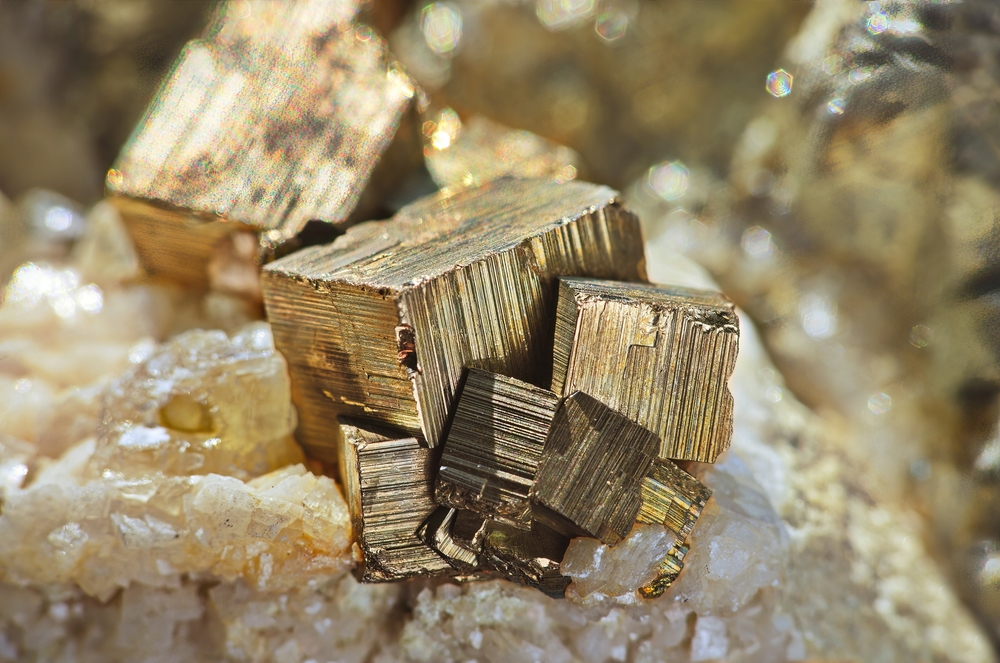
Pyrite has long been a staple in collections. It’s pleasing to look at, often comes in interesting combinations with other minerals, and has its unique crystal shape. And, as it turns out, it may be a precursor for gold production in the near future. It appears that pyrite will have the last laugh, considering how much of it has been discarded by miners looking for gold.
6. Native Gold
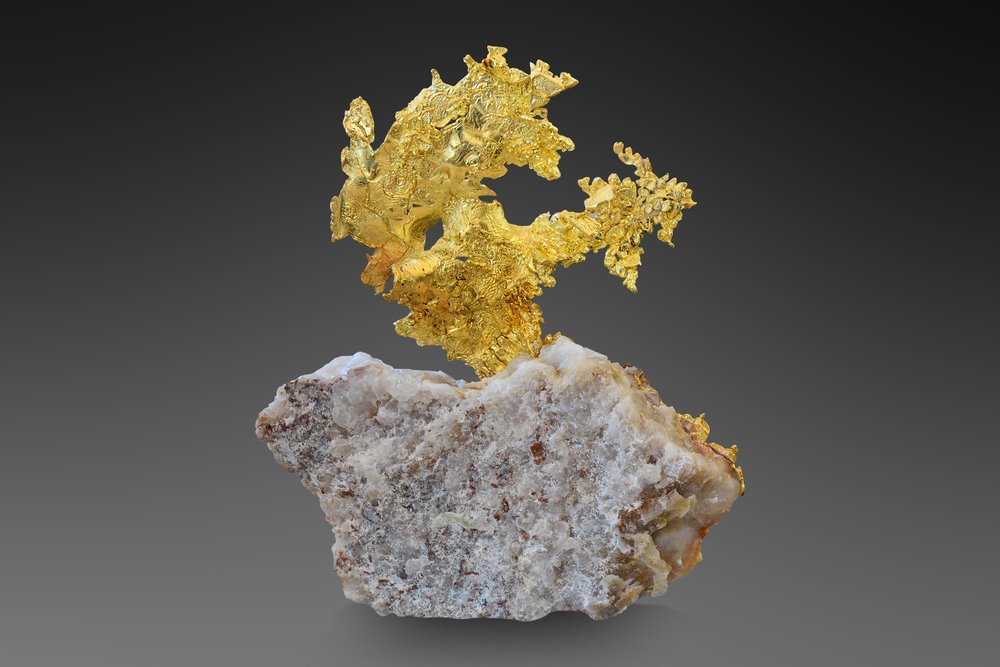
It’s impossible to discuss yellow minerals without touching on native gold. Gold is a huge part of human history, its high value and easy workability have made it a staple currency item for thousands of years. People still pan for gold recreationally, perhaps on the very small chance they can find something more than a few flakes in the black, iron-rich sand of gold-bearing creeks.
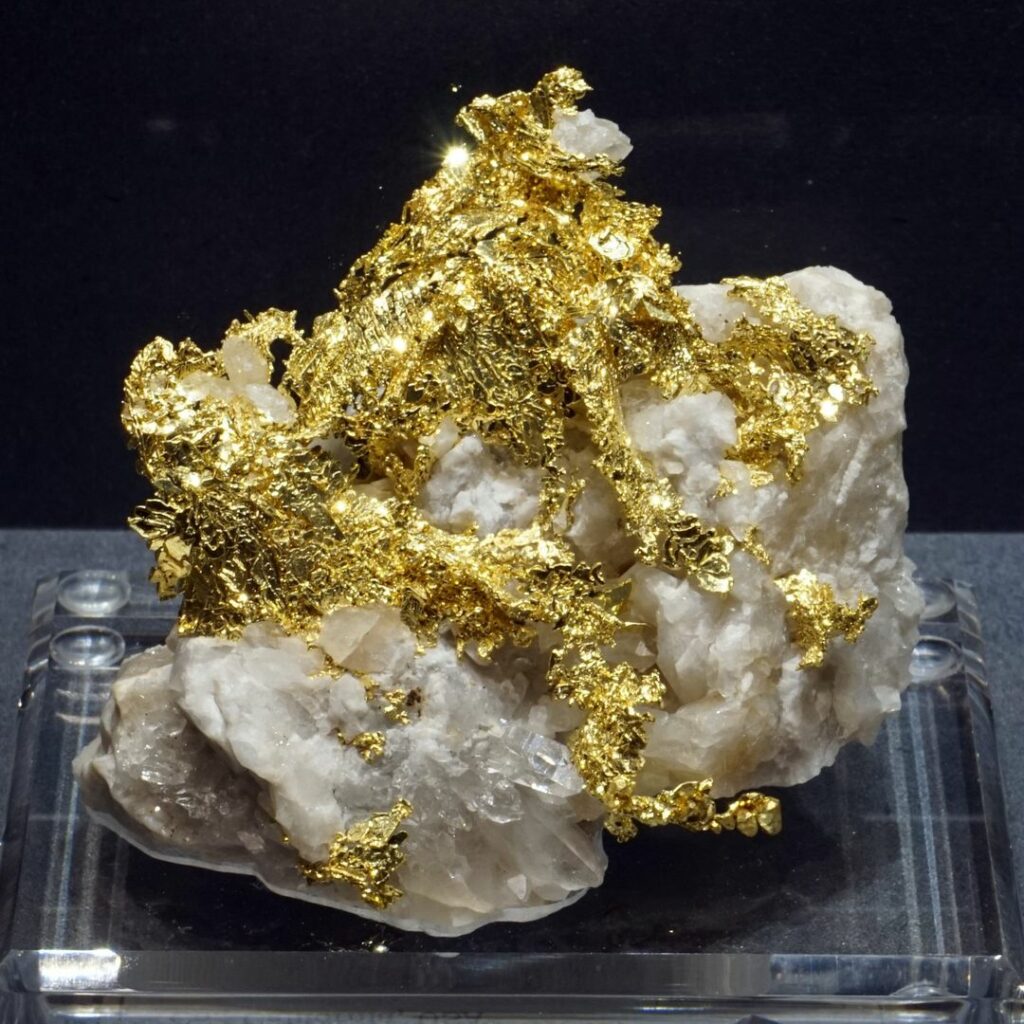
Gold occurs in its native form in many places. Gold’s purity is usually over 85% in this case, with additional components of copper, silver, and even heavy metals like lead included in the nuggets. These samples are worth more than just their weight in gold, however, as good-sized nuggets can command high prices.
Gold and humanity have been intertwined for most of our written history. The metal is beautiful, easy to work, and most sources didn’t require smelting. Native gold deposits are rare these days, our lust for the yellow metal knows few bounds, but elemental gold is sure to be with us for a long time to come.
7. Carnotite
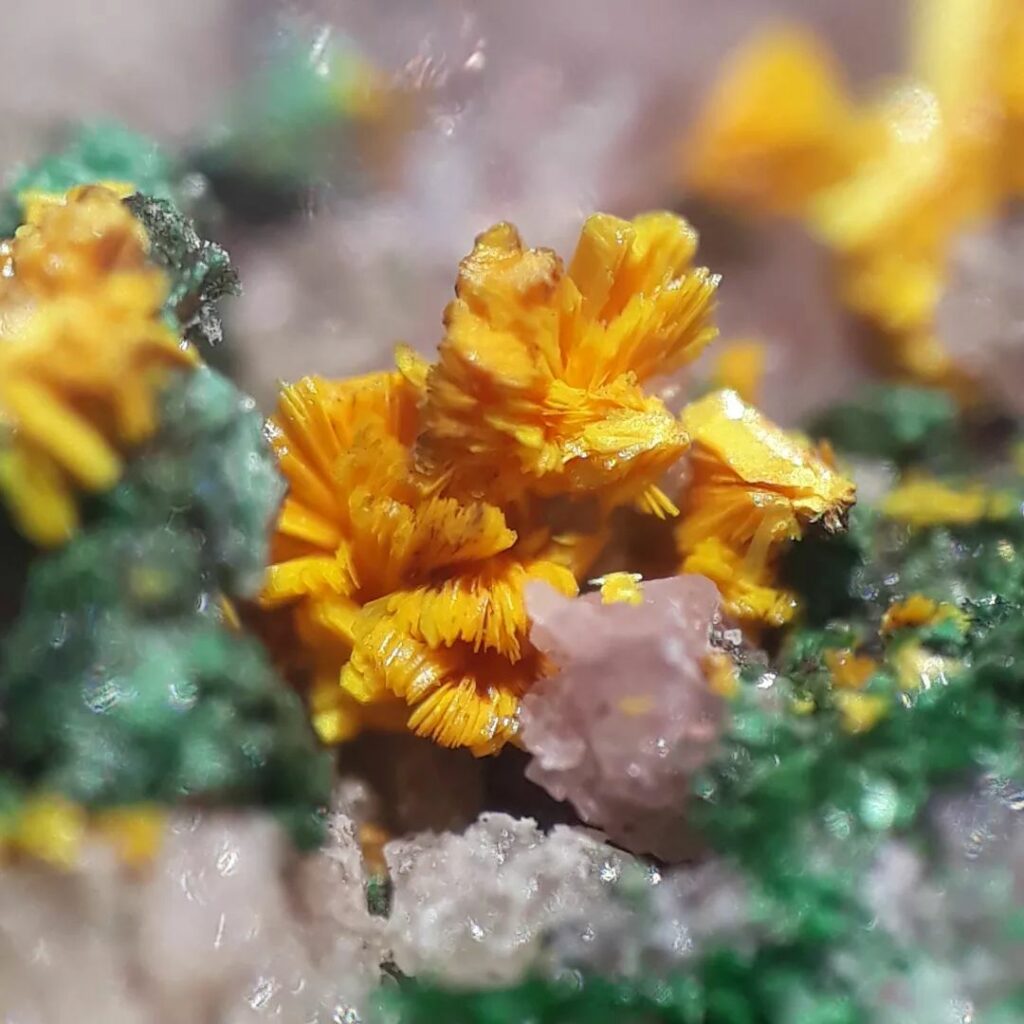
Carnotite is a fairly nondescript yellow mineral that can be found on its own, with various included minerals or even dispersed in sandstone. It’s also a potassium uranium vanadate mineral, which makes it an ore of uranium. So, in addition to being a yellow rock… it’s also radioactive.
Carnotite is just one of many uranium ores found in mines, but the majority of it seems to come from Colorado. Oddly enough, most of these different minerals are yellow to one degree or another. Carnotite is often concentrated around petrified logs on the Colorado Plateau or spread through large areas of the bedrock.
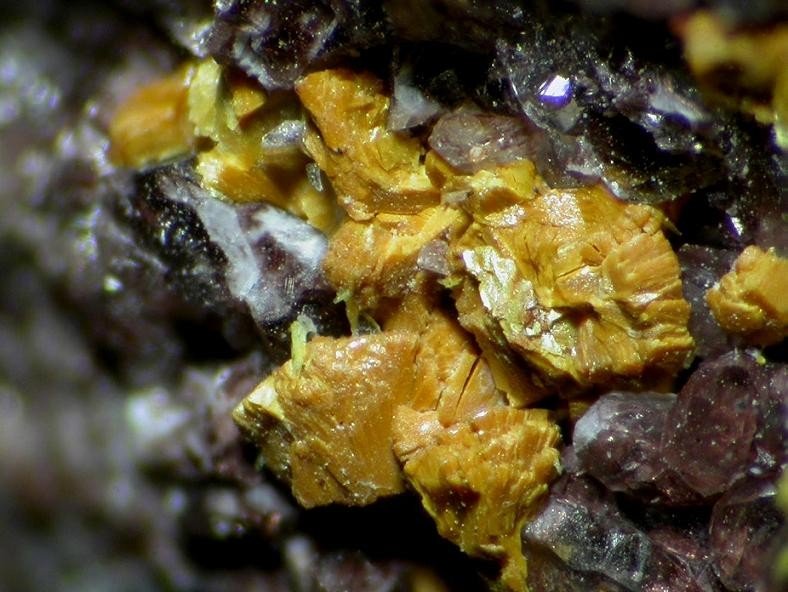
Carnotite is available for purchase. The uranium content does make it radioactive, but not overly dangerous. People actually collect radioactive minerals enough that there’s a guide called Here Be Dragons available to help people dispel myths while taking proper precautions. If you’re interested in these minerals I would give that
8. Yellow Sapphire
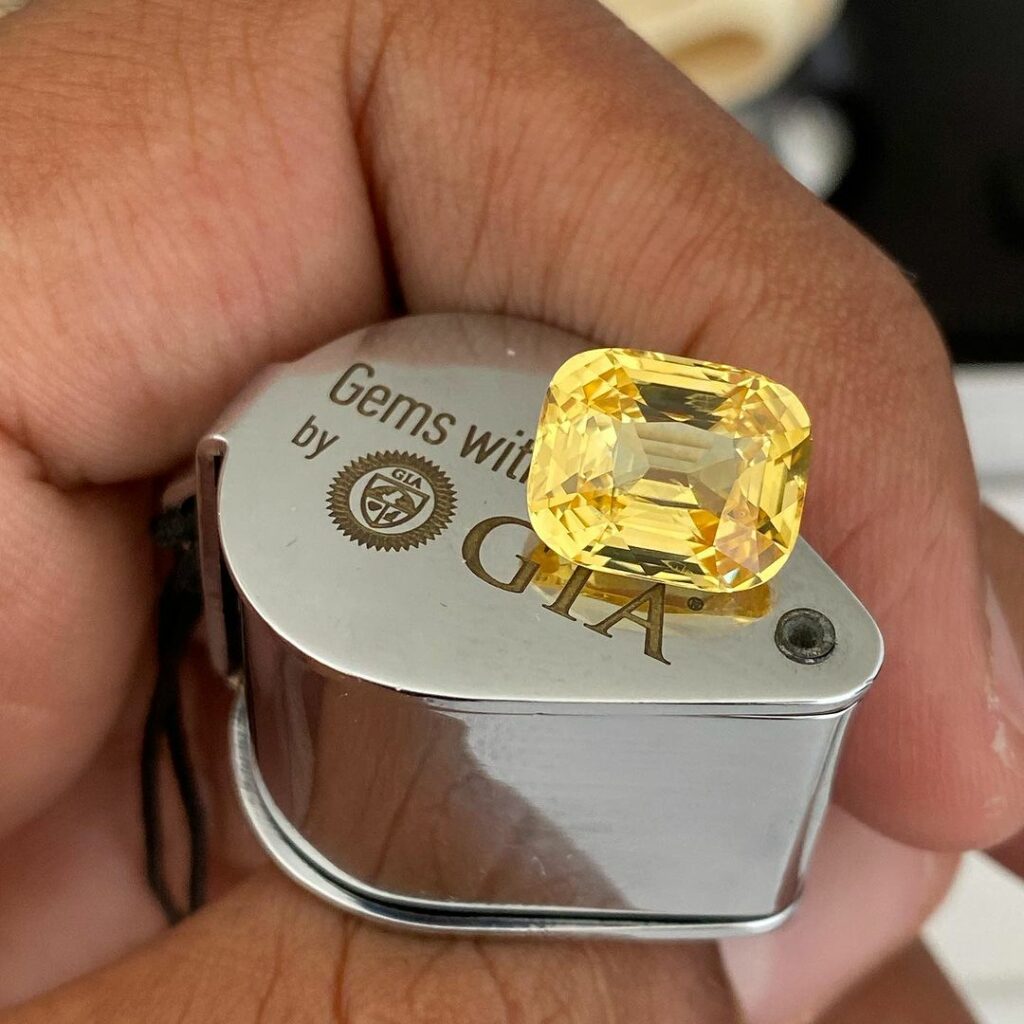
Corundum is a gem, no matter what color. Since all gemstones in the order that aren’t rubies get referred to as sapphire… well, we get yellow sapphire from certain impurities in corundum. Yellow sapphire is less expensive than blue or red corundum, but it’s still in the precious stone range for the most part.
Yellow sapphires are graded based on color and clarity. The ideal yellow sapphire is a deep canary yellow with minimal inclusions. These inclusions are actually quite important, especially the feather types. These are destroyed during heat treatment, which brings out the color of the stone more but lowers the value compared to a comparable sapphire of the same natural hue.
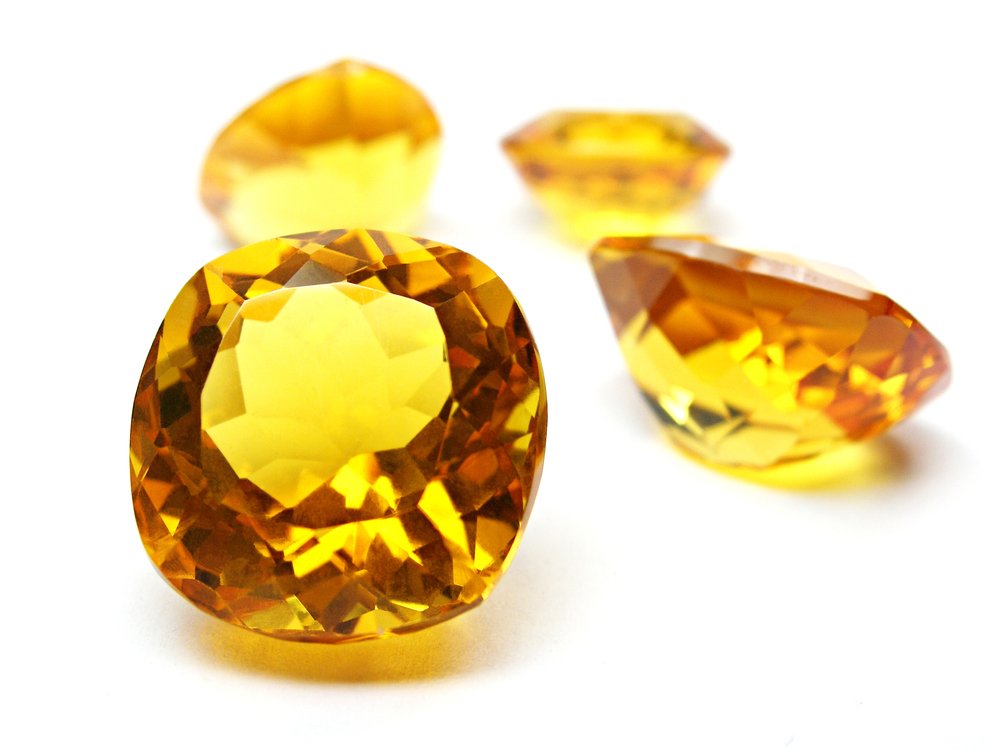
Despite the importance of the inclusions, yellow corundum is actually renowned for having fewer inclusions than many of the other available colors. This gives them high clarity in addition to their desirable color. Currently, yellow sapphires are going up in price, but its unsure how long that trend will continue.
9. Sphene/Titanite
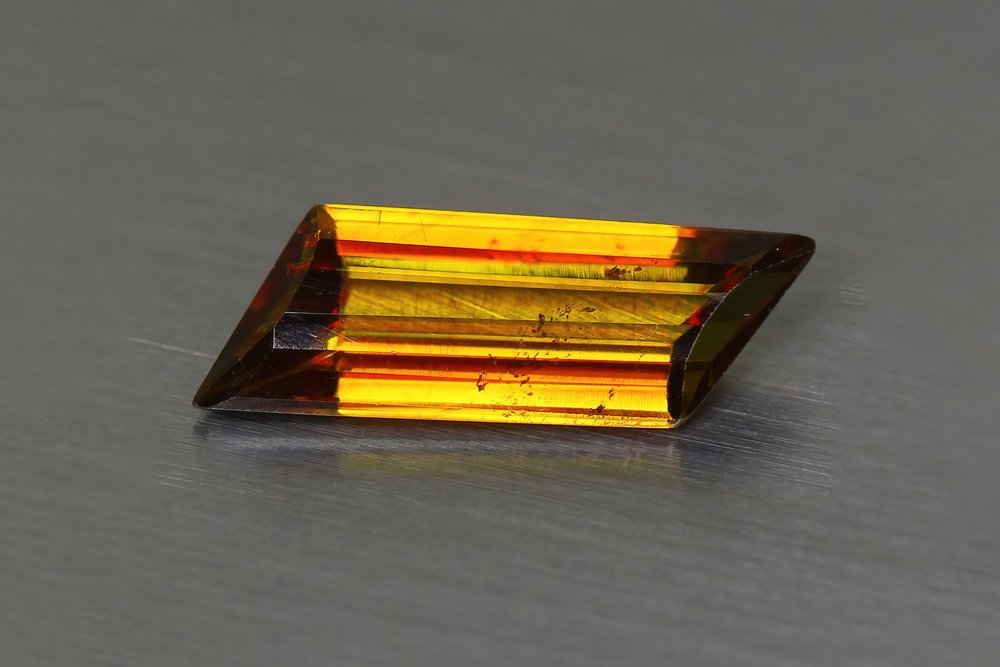
Sphene is an incredible mineral, and one of my personal favorites. It occurs as a yellow or green crystal. When faceted it displays an incredible internal fire, breaking the shades of yellow or green into countless red, yellow, and orange tones in a dazzling way. While it makes for incredible gemstones, that’s not where the bulk of this material ends up.
Sphene is also known as titanite. The name comes from its titanium content and much of the sphene out there end up being ground up and processed to create titanium dioxide. This chemical is then used as a white pigment. The majority of this sphene is of low quality.
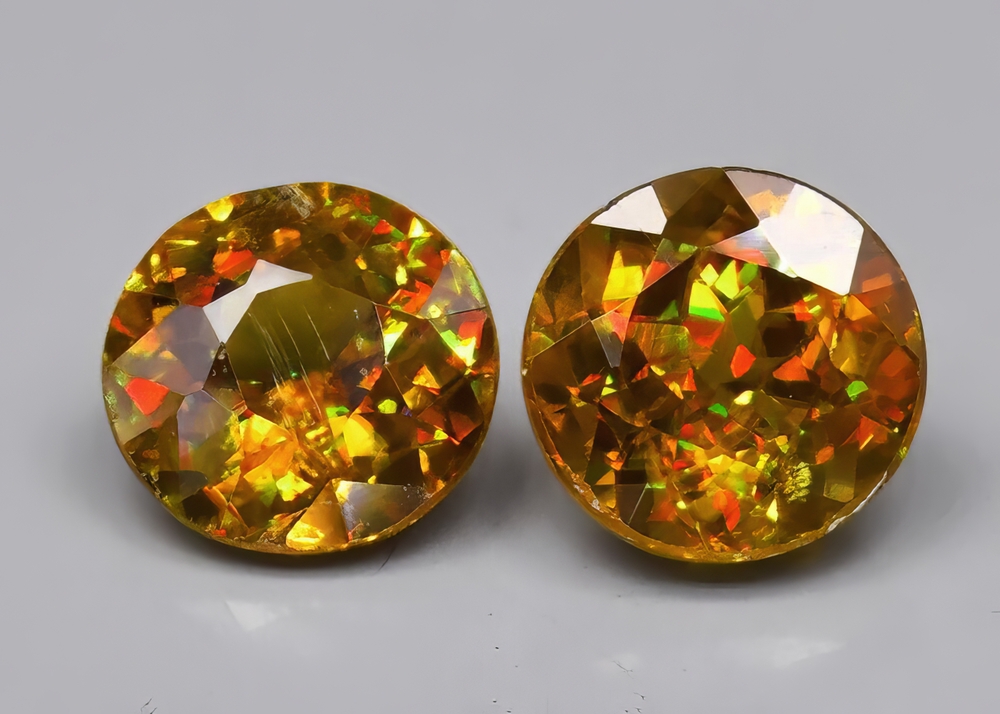
Sphene is often a bit of a curiosity when faceted, mainly due to the intense optical properties it displays. Its lower hardness makes it a bit unsuitable for rings and bracelets. You can also find large mineral samples of it available from dealers on occasion. It’s a unique stone and one that’s often overlooked in favor of those with more fame.
10. Legrandite
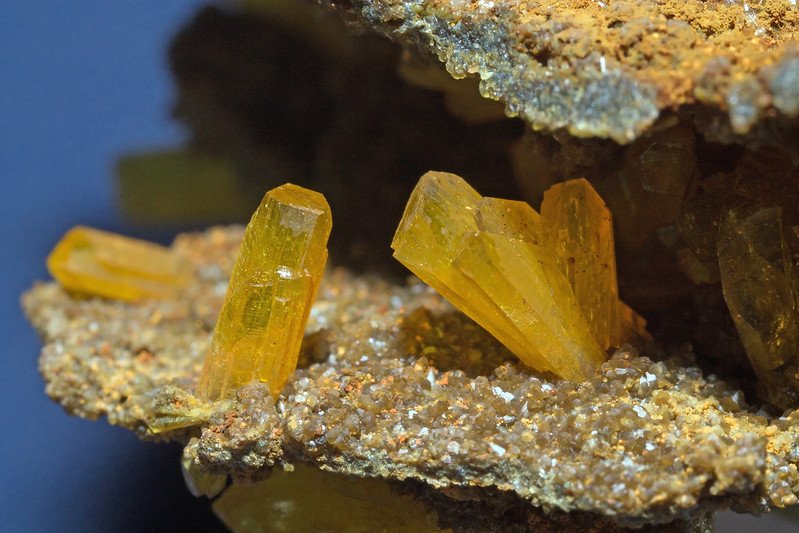
Legrandite is a rare zinc arsenate mineral. It forms into tight bunches of yellow crystals with deep color saturation and sharp forms. It’s a favorite among collectors. After all, it’s a colorful and beautiful crystal that doesn’t have much industrial or commercial use.
Indeed, legrandite is sometimes cut into gemstones for the high-end collectors market. The crystals have a curious property where they become more and more opaque as they become thicker. These range from light yellow, tiny crystals to incredibly deep yellows in larger ones.

Care should be taken handling legrandite since it contains arsenic, but it’s not overly dangerous. Instead, it’s one of the few minerals that are primarily of interest to collectors as a curiosity. It’s a gorgeous stone, just make sure you wash your hands after handling it.
11. Zircon
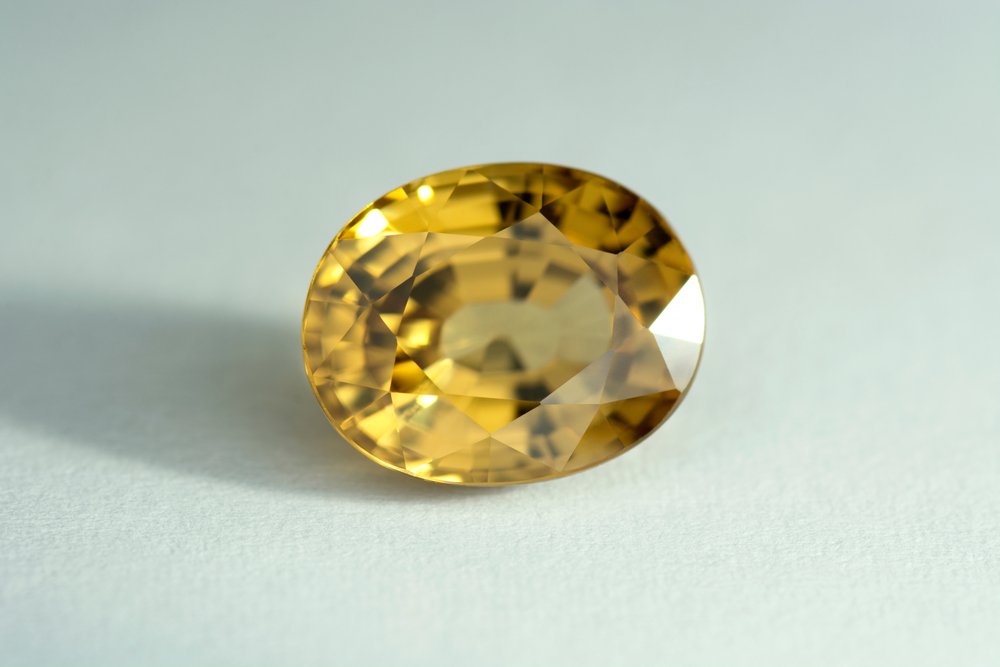
Zircon is a common mineral that occurs in a few colors but its name derives from the yellow variety. The etymology goes back to the Persian word zargun. Zargun translates as “golden-hued” although not all forms of the mineral are yellow. Those that are will sometimes be referred to as jargoon, as opposed to the redder hyacinth variety of the mineral.
Zircon is mainly known for gemstones, but it’s present as a common mineral throughout the Earth’s crust. The gemstones are almost ideal, with a 7.5 hardness and a great deal of fire due to the refractive index of the mineral. The lower quality stuff is often used to make transparent ceramics opaque and it’s the ore of the rare earth metal zirconium.
Zircon has stood the test of time, being a favored gemstone for hundreds of years. The name still harkens back to gold despite the various colors that have emerged. Just don’t confuse it with cubic zirconia, the manmade gemstone. While zirconium is part of the matrix of CZ gemstones, they’re entirely different in properties and structure from each other.
12. Marialite
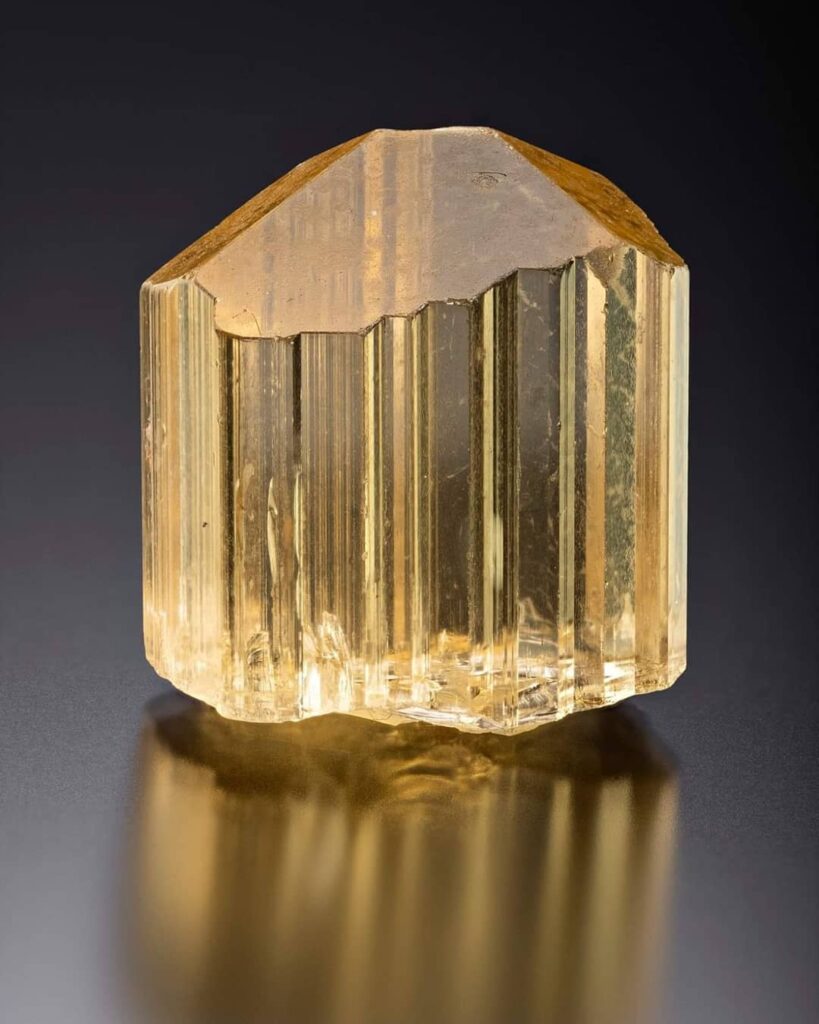
Marialite is a rare mineral that’s primarily of interest to collectors. It’s a member of the scapolite group, most often found as yellow crystals with high clarity. They also react strongly to UV light, where a shortwave UV can show them as an even brighter yellow.
Marialite occurs in both purple and yellow colors, but the latter is more common. The massive mineral form of marialite is often dull in color, with just hints of yellow. The best specimens are crystalline with deeper coloration. Marialite gets expensive quickly as you look at better samples, simply due to the rarity of the mineral.
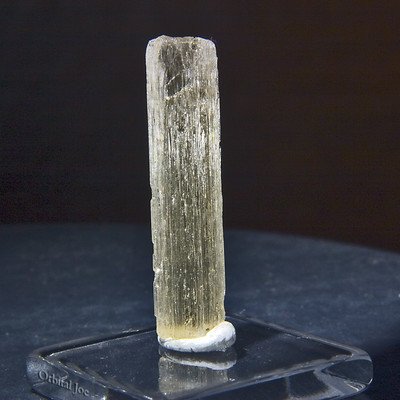
While not the first mineral on most people’s minds when they think of yellow, Marialite is yet another example that just proves gold coloration is spread across all of nature. While not all that useful, it’s definitely pretty and that’s enough for me!
13. Cymophane
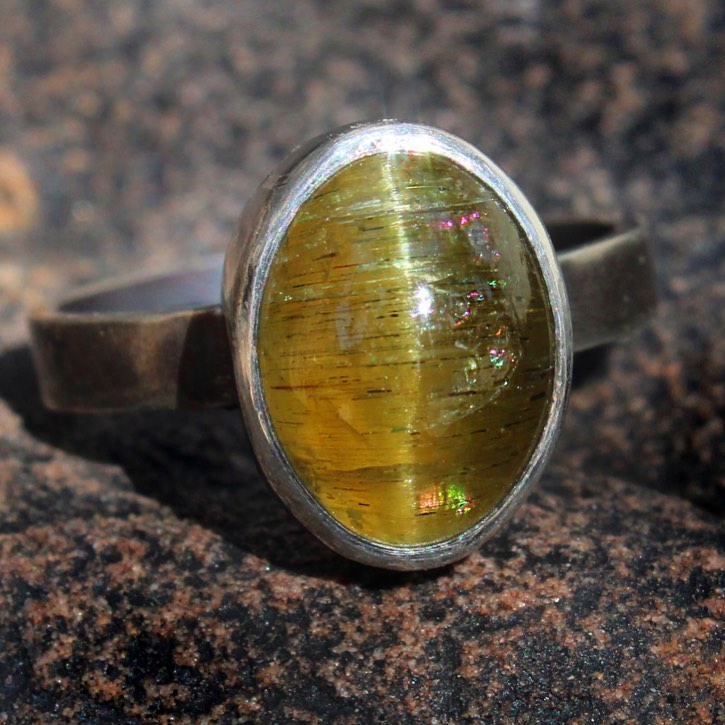
Cymophane is a variety of chrysoberyl. The most famous member of that family is undoubtedly the rare alexandrite variant but cymophane has a beauty all its own. The common name for cymophane is “cat’s eye” due to the unique optical effect it displays and the deep yellow coloration.
Cat’s Eye is an apt name. The stone displays chatoyancy similar to tiger eye quartz, and it must be cut carefully to get the best stone. Chrysoberyl is judged based on its color and the orientation of the chatoyancy, with a centered band of light being greatly preferred. Care must be taken to acquire this stone since there are a lot of fakes in various colors sold as natural.

Cymophane’s natural beauty is hard to rival, especially when its been cut in the proper fashion. If you can avoid fakes then you’ll have a true natural wonder on your hands. It’s a great example of the chrysoberyl class, and contrasting it with alexandrite shows just how unique those minerals truly are.
- Online rock and mineral club for collectors of all levels!
- Find community with like-minded rock and mineral enthusiasts.
- Monthly Giveaways!
- Free Access to Entire Digital Library of Products (current and future products)*


